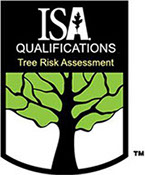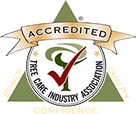The science of preserving nature since 1964
Tree Risk Assessment & TRAQ
Almstead offers Tree Risk Assessment services for our customers. All our arborists have training and experience in tree risk assessment. In addition, most of our arborists have also undergone the more extensive Tree Risk Assessment Qualification (TRAQ) program offered by the International Society of Arboriculture (ISA).
Based upon our clients’ requests and access provided, our arborists typically conduct a limited visual assessment of the significant trees throughout a property by looking for health and vigor issues and signs of decline or obvious defects (Level 1 Assessment). On a property or in a municipality or park-like setting this may consist of a drive-by, depending on the site and time of season. They may also do a basic assessment (Level 2 Assessment) of an individual tree by walking around the tree 360º and visually inspecting the condition of the canopy, trunk and exposed root flares. This Assessment could include sounding with a mallet to test for hollows, and probes to inspect levels of decay in the tree.

For a more comprehensive inspection, we use the TRAQ method which would always be comprised of a Level 2 Assessment and may include a Level 3 Advanced Assessment where recommended and warranted as authorized by the client. It provides a standardized and systematic process for assessing tree risk. It helps arborists and property owners decide whether a tree should be retained, removed, or whether risk mitigation techniques, such as pruning, cabling, etc., should be considered.

Utilizing a series of resistograph readings (see below) an arborist can estimate the decay pattern present in a tree.
 The TRAQ system utilizes a detailed tree risk assessment form that arborists complete while inspecting trees on a property. In addition to basic data, such as species, diameter of the tree at breast height (DBH), tree height and crown spread, it also requires the arborist to record and evaluate other detailed information about the location, conditions, defects in the tree’s trunk, crown, and roots, as well as potential targets if the tree or its branches fall.
The TRAQ system utilizes a detailed tree risk assessment form that arborists complete while inspecting trees on a property. In addition to basic data, such as species, diameter of the tree at breast height (DBH), tree height and crown spread, it also requires the arborist to record and evaluate other detailed information about the location, conditions, defects in the tree’s trunk, crown, and roots, as well as potential targets if the tree or its branches fall.

Based on the information from their assessment, as well as results from other testing, using specialized tools, such as an Air Spade, a Resistograph (see above) or aerial inspection, the arborist is able to create a comprehensive report that offers a complete analysis of each tree and its risk of failure.

LOCATIONS:
Lower Westchester County, NY and New York City
58 Beechwood Ave, New Rochelle, NY 10801
914-576-0193
Upper Westchester (North of I-287)
15 Broadway, Hawthorne, NY 10532
914-741-1510
Fairfield County, Connecticut
547 Hope Street, Stamford CT 06907
203-348-4111
Bergen & Passaic Counties, NJ
504 High Mountain Road, North Haledon, NJ 07508
973-636-6711
Contact us for a Free Consultation
